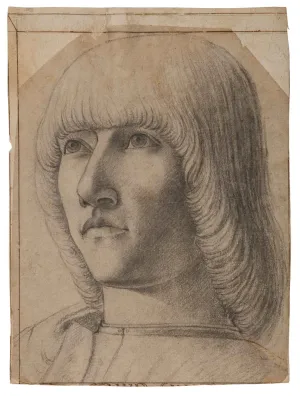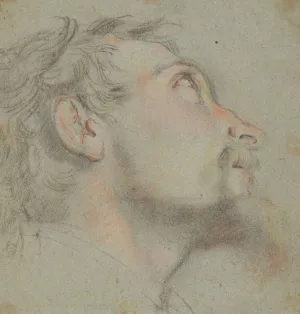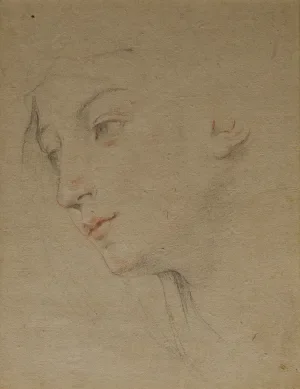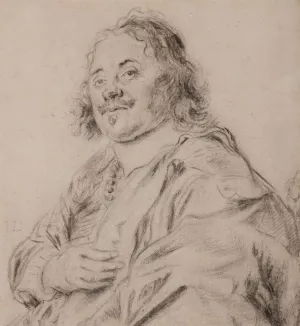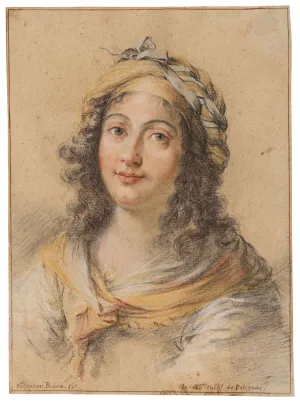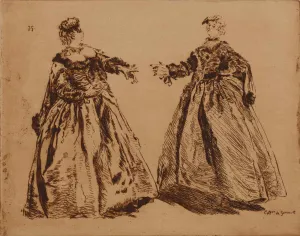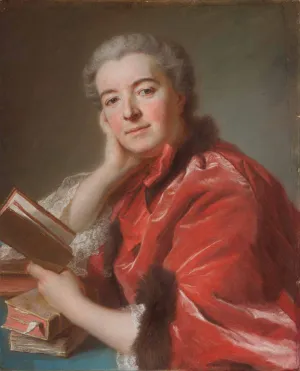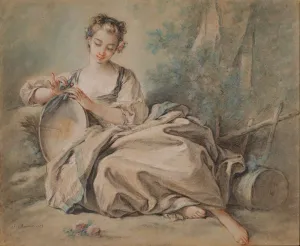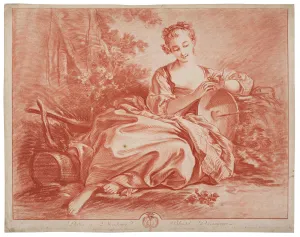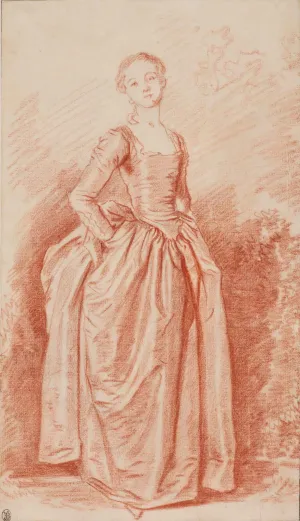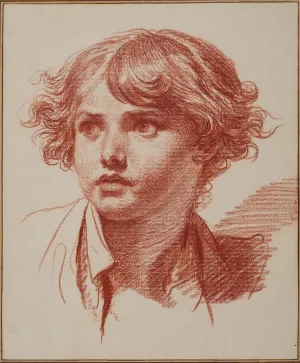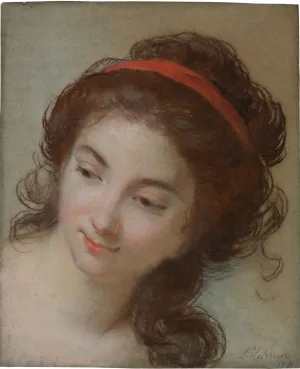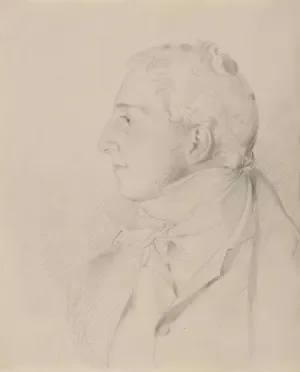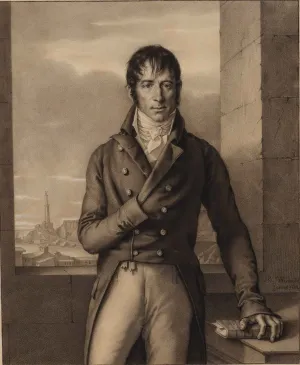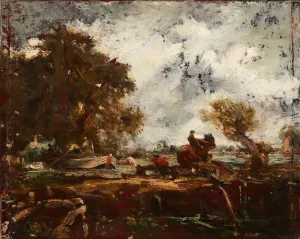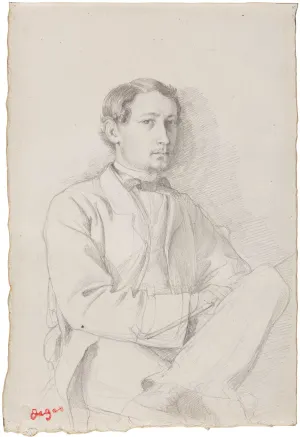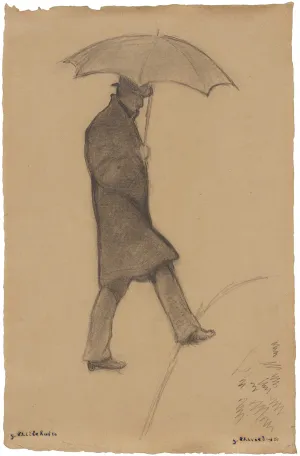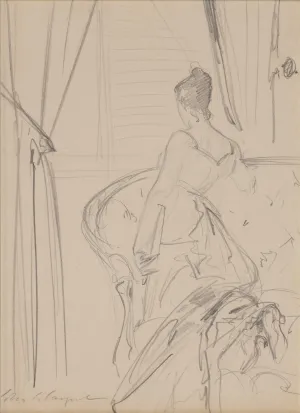All Objects
Each object is accompanied by an audio recording of the label text. In addition, nine objects include a personal reflection by one of the curators.
Anonymous Venetian artist
Head of a Youth, late 15th or early 16th century
Black chalk and traces of brown ink on grayish-cream laid paper
8 1/2 × 6 1/4 in. (216 x 159 mm)
Promised Gift from the Collection of Elizabeth and Jean-Marie Eveillard
Photo Joseph Coscia Jr.
Male portrait heads drawn in black chalk abound in Venetian art of the late fifteenth and early sixteenth centuries. Some may have been preparatory for, or derived from, painted portraits of a similar format; others were produced as independent pieces. This sheet bears close similarities with the work of painters such as Alvise Vivarini (act. 1476–1504) and Jacometto Veneziano (act. 1472–97), who worked in the tradition of the Bellini workshop.
Federico Barocci (Urbino 1535–1612 Urbino)
Head of a Man, ca. 1589
Black chalk with orange, pink, and yellow pastel on blue laid paper
9 3/8 × 8 7/8 in. (238 × 225 mm)
Promised Gift from the Collection of Elizabeth and Jean-Marie Eveillard
Photo Joseph Coscia Jr.
A prolific draftsman, Federico Barocci in many ways anticipated some of the stylistic choices of younger generations of Italian painters. His pastel heads have been especially celebrated since the seventeenth century. Though often described as the artist’s way of recording poses quickly, many of Barocci’s pastel heads are at the scale of final paintings, which suggests that they were not drawn impulsively.
Guido Reni (Bologna 1575–1642 Bologna)
Head of a Woman, 1620s or early 1630s
Black, red, and white chalk on faded blue laid paper
11 1/2 × 8 15/16 in. (292 × 227 mm)
Promised Gift from the Collection of Elizabeth and Jean-Marie Eveillard
Photo Joseph Coscia Jr.
Reni, a prolific draftsman, distributed his drawings rather freely among his pupils and creditors. Nonetheless, nine hundred drawings were in his possession at his death, and around a third of them survive today. This drawing shows Reni’s consummate skill as a draftsman in three chalks (black, red, and white), a technique seldom used by his contemporaries in Bologna. Suggesting forms with very few, lightly traced lines, the artist’s style is suggestive rather than descriptive.
Jan Lievens (Leiden 1607–1674 Amsterdam)
Portrait of a Man, 1640s
Black chalk on cream laid paper
8 1/2 × 7 13/16 in. (216 × 198.4 mm)
Promised Gift from the Collection of Elizabeth and Jean-Marie Eveillard
Photo Joseph Coscia Jr.
As a young artist, Lievens worked alongside Rembrandt in his native Leiden before traveling to London, Antwerp, The Hague, Berlin, and other cities. Lievens was a painter, draftsman, and printmaker, and his work is characterized by a wide range of styles and subject matter. This sheet is part of a group of graphic portraits he produced over many years, inspired by Anthony van Dyck’s Iconographie, the celebrated printed series of portraits of cultural figures (including Lievens himself).
Transcript
Curator's Personal Reflection
Speaker: Aimee Ng, Curator
We don’t know who this man is, but—at least to me—he looks jolly, like he was a lot of fun. His curling hair seems to have a life of its own, captured in quick marks by the artist, who also notes the crinkles of crow’s feet at the corners of his eye, as if he is someone who laughs a lot. I’m struck by the way Lievens has portrayed him, relaxed, informal, and yet proud. He raises slightly one eyebrow, peering out at us—but really he must have been peering at Lievens himself, who may have been sitting across from him. I can almost hear Lievens instruct him to reach his hand across his chest, to grasp part of his clothing—a dignified gesture that adds visual interest to the expanse of his corpulent upper body, cloaked so nonchalantly with his coat.
Salvator Rosa (Naples 1615–1673 Rome)
Head of a Woman (Lucrezia Paolini), 1640s
Black, red, and white chalk with blue, yellow, pink, and white pastel on beige laid paper
12 15/16 × 9 7/16 in. (328 × 239 mm)
Promised Gift from the Collection of Elizabeth and Jean-Marie Eveillard
Photo Joseph Coscia Jr.
Salvator Rosa led a turbulent life between Naples, Florence, and Rome, where he was closely acquainted with literary and theater figures. Rosa produced a corpus of drawings that are eclectic in style and eccentric in subject matter. This drawing is one of just a dozen head studies in pastel and the only one in the group to portray a woman. As the sitter—who may be Lucrezia Paolini (ca.
Transcript
Curator's Personal Reflection
Speaker: Giulio Dalvit, Assistant Curator of Sculpture
We know that this sheet rested for centuries in an album of drawings. Imagine this young woman suddenly appearing to you as you’re leafing through the pages of an album. Her eyes finally meeting yours—the viewer’s—after months of darkness. She is addressing you. But what is she trying to communicate? Her eyes are not the same shape, and the colors are undefinable. And there is something suspended in the way she looks at us, her lips smiling but not quite. It is an expression that requires untangling, like the knots in her bonnet and her scarf. It is said that Salvator Rosa used his partner as a model for this drawing: you can see it all—the boredom, the intimacy, the charm of posing for the person you love.
Jean-Antoine Watteau (Valenciennes 1684–1721 Nogent-sur-Marne)
Two Heads, an Arm, and Three Hands, ca. 1716
Black, red, and white chalk on beige laid paper
8 7/16 × 9 7/8 in. (214.3 × 250.8 mm)
Promised Gift from the Collection of Elizabeth and Jean-Marie Eveillard
Photo Joseph Coscia Jr.
Despite his short life, Watteau inspired generations of artists working in France under Louis XV. He is credited with inventing the fête galante, a genre of pastoral, dreamlike paintings of figures in contemporary French attire and theatrical costume shown in performance, at leisure, or engaged in amorous pursuits. Watteau drew avidly from live models, filling books with sketches to which he would return sometimes years later.
Nicolas Lancret (Paris 1690–1743 Paris)
Two Women Dressed “à la grecque” with a Subsidiary Study of a Head, late 1720s
Red, black, and white chalk on light brown laid paper
7 1/4 × 9 1/2 in. (185 × 240 mm)
Promised Gift from the Collection of Elizabeth and Jean-Marie Eveillard
Photo Joseph Coscia Jr.
Urged by his mentor Jean-Antoine Watteau to draw figures and combine them to form paintings “of his own choice and imagination,” Nicolas Lancret produced a number of drawings of independent figures that could be recombined in various ways against a landscape. Part of a suite of a dozen sheets depicting the same subject, known as la belle Grecque (the beautiful Greek)—often combined with le Turque amoureux (the amorous Turkish man)—this drawing in fact represents a woman dressed in Polish costume, whom the artist used as a stock figure in several paintings.
Jules de Goncourt (Paris 1830–1870 Paris) after Nicolas Lancret
Comédiennes en costume polonais, 1858–76
Etching on cream laid paper
9 1/2 × 11 1/4 in. (241 × 285 mm)
Promised Gift from the Collection of Elizabeth and Jean-Marie Eveillard
Photo Joseph Coscia Jr.
This print by Jules de Goncourt reproduces a drawing by Nicolas Lancret.
Giovanni Battista Piazzetta (Venice 1682–1754 Venice)
Head of the Adoring Virgin, late 1720s (?)
Black and white chalk on blue laid paper
16 × 11 3/4 in. (406 × 298 mm)
Promised Gift from the Collection of Elizabeth and Jean-Marie Eveillard
Photo Joseph Coscia Jr.
Giovanni Battista Piazzetta’s drawings far outnumber his paintings. He was chiefly known for book illustrations and head drawings—the so-called “character heads”—but this drawing may be one of just about twenty preparatory sheets by him to survive. Although it does not match any surviving painting by the artist, it bears close similarities with the head of the Virgin Mary in Piazzetta’s altarpiece in Santa Maria della Fava in Venice, painted in 1725–27.
Maurice-Quentin de La Tour (Saint-Quentin 1704–1788 Saint-Quentin)
Anne-Marguerite Perrinet de Longuefin, Madame Rouillé, ca. 1738
Pastel on laid paper
24 1/4 × 19 1/2 in. (618 × 495 mm)
Promised Gift from the Collection of Elizabeth and Jean-Marie Eveillard
Photo Joseph Coscia Jr.
Anne-Marguerite Perrinet de Longuefin (1698–1795) was the daughter of a wine merchant from the Sancerre region. In 1716, she married Pierre-Jean Rouillé, a marchand mercier (dealer in decorative arts and luxury fabrics). La Tour portrays her as an intellectual, surrounded by books. She wears a red velvet coat, trimmed in fur, described at the time as a “Polish mantle,” a garment popularized in France in the second half of the eighteenth century by Queen Maria Leszczyńska, who was Polish.
Transcript
Curator's Personal Reflection
Speaker: Xavier F. Salomon, Deputy Director and Peter Jay Sharp Chief Curator
When it comes to pastels, Maurice-Quentin de La Tour pushed the medium to new heights. Not only was he a master at depicting textures of fabrics and materials, but he also meticulously explored the psychology of his sitters. When facing a La Tour pastel portrait, it is as if you are encountering a person. We know so little about Madame Rouillè, other than that she was the daughter of a wine merchant. Was she interested in books and literature, or is she simply posed as an intellectual? To me, the portrait suggests a cleverness and a voracious intellect, but also the delicacy and slight acidity of a good glass of Sancerre wine.
François Boucher (Paris 1703–1770 Paris)
A Reclining Shepherdess (La Bergère au coeur), 1753
Chalk, pastel, and watercolor wash, and possibly traces of graphite on laid paper
15 1/2 × 18 7/8 in. (393.7 × 479.4 mm)
Promised Gift from the Collection of Elizabeth and Jean-Marie Eveillard
Photo Joseph Coscia Jr.
One of the most prominent and prolific painters in France during the reign of Louis XV, Boucher worked across many media and genres, playing a significant role in developing the painted pastoral as a genre in French art. Parisian patrons collected Boucher’s drawings during his life, and he may have made sheets like this as works of art in their own right.
Gilles Demarteau (Liège 1722–1776 Paris) after François Boucher
A Reclining Shepherdess (La Bergère au coeur), ca. 1756–76
Crayon-manner engraving in a warm red, thick printing ink on laid paper
17 × 21 9/16 in. (431.8 × 547.7 mm)
Promised Gift from the Collection of Elizabeth and Jean-Marie Eveillard
Photo Joseph Coscia Jr.
This print by Gilles Demarteau, which was made using the innovative technique of red chalk engraving, reproduces a composition by François Boucher.
Jean-Honoré Fragonard (Grasse 1732–1806 Paris)
Young Woman (“La Coquette”), ca. 1770–73
Red chalk with touches of black chalk underdrawing on cream laid paper
14 3/8 × 8 1/4 in. (365 × 210 mm)
Promised Gift from the Collection of Elizabeth and Jean-Marie Eveillard
Photo Joseph Coscia Jr.
In the early 1770s—at the same time that he was working on the first four large canvases of the Progress of Love—Fragonard produced a group of red chalk drawings that depict single figures of young women standing in landscapes. Not necessarily linked to paintings, these drawings were exhibited and sold as works of art in their own right. The women depicted have traditionally, though unconvincingly, been identified as either Fragonard’s daughter Rosalie or his sister-in-law Marguerite Gérard.
Jean-Baptiste Greuze (Tournus 1725–1805 Paris)
Head of a Boy, ca. 1777
Red chalk on cream laid paper
15 1/2 × 12 3/4 in. (393.7 × 323.8 mm)
Promised Gift from the Collection of Elizabeth and Jean-Marie Eveillard
Photo Joseph Coscia Jr.
Best known for his moralizing and sentimental genre scenes, Jean-Baptiste Greuze was unrivaled among his peers in France for his ability to convey human expression. Contemporary accounts describe his near-obsessive approach to drawing figures, often producing multiple studies to prepare a single figure or composition. This head study is related to The Father’s Curse: The Ungrateful Son, a composition explored by the artist in a number of versions over more than a decade. It may have been made close to the time he produced the 1777 painting of it now at the Musée du Louvre.
Élisabeth-Louise Vigée Le Brun (Paris 1755–1842 Paris)
Head of a Woman, 1784
Pastel on faded blue paper
12 × 9 7/8 in. (305 × 248 mm)
Promised Gift from the Collection of Elizabeth and Jean-Marie Eveillard
Photo Joseph Coscia Jr.
A celebrated portrait painter, Vigée Le Brun witnessed major political and social changes during her seven-decades-long career. She traveled extensively through some of the most important European courts and was well known for her portraits, becoming, in the 1780s, one of Queen Marie-Antoinette’s favorite painters. As a young woman, she trained with her father, Louis Vigée, an established pastellist. She later worked primarily in oil but never fully abandoned the technique her father had taught her.
Transcript
Curator's Personal Reflection
Speaker: Xavier F. Salomon, Deputy Director and Peter Jay Sharp Chief Curator
Very few works by women artists are represented at the Frick, so we are particularly thrilled to have this pastel sketch in the collection—all the more so because it is by one of the towering female painters of the eighteenth century, Elisabeth Vigée Le Brun. She was trained by her father, a celebrated pastellist, and in this small work you see her dexterity with the medium. You can imagine the beautiful model posing for the painter, her head slightly tilted, as the artist mentally transformed her into an allegorical figure for use in a grand painting. I doubt we will ever know who the model is and what she was meant to represent. That, to me, adds to the fascination of this work.
Giandomenico Tiepolo (Venice 1727–1804 Venice)
Christ and the Centurion of Capernaum, ca. 1786–90
Pen and brown ink, orange-brown wash, and black chalk over a black chalk underdrawing on off-white laid paper
19 5/16 × 15 1/8 in. (490 × 384 mm)
Promised Gift from the Collection of Elizabeth and Jean-Marie Eveillard
Photo Joseph Coscia Jr.
Giandomenico Tiepolo produced three large suites of drawings. By far the most extensive is one of 314 sheets of paper that depicts the history of early Christianity, starting with Joachim and Anne and continuing through the martyrdom of saints Peter and Paul. This drawing belongs to this biblical series. The sheet was carefully worked from light to dark in pen, ink, and wash. Often transgressing the contours of the figures, Tiepolo’s approach to wash was so free that he even applied it with his finger (a fingerprint can still be seen at the bottom of the drawing).
Transcript
Curator's Personal Reflection
Speaker: Giulio Dalvit, Assistant Curator of Sculpture
We often think of drawing as a medium recording a moment—a way to freeze a moment in time. What I love about this drawing is that it tries to do the opposite. It is part of a series of 314 sheets that depict episodes from the Bible. Tiepolo here had to weave this vertical drawing into a horizontal narrative spanning many sheets of paper. He uses the castle as the backdrop against which the scene unfolds, as if on the stage of a theatre. And he suggests movement by allowing the ink to go beyond the contours of the figures. There is something cinematic about this vibrant scene. You want to know what happens next. But the freedom of the ink also reminds us of the presence of the artist. You can almost see his brushstrokes, and you feel his love for quotidian things—a dog in the foreground, a gulp of swallows in the background
Pierre-Paul Prud’hon (Cluny, Saône-et-Loire 1758–1823 Paris)
Reason Speaks, Pleasure Entraps (La Raison parle, le Plaisir entraîne) or The Choice Between Virtue and Vice, ca. 1795
Charcoal and black and white chalk with brown wash on faded blue laid paper
8 3/8 × 6 5/8 in. (213 × 168 mm)
Promised Gift from the Collection of Elizabeth and Jean-Marie Eveillard
Photo Joseph Coscia Jr.
Pierre-Paul Prud’hon is best known for his academic drawings on blue paper and for his allegorical paintings and portraits. An active Jacobin during the Reign of Terror, as well as an artist who benefitted from the patronage of both Napoleon and the restored Bourbon kings, Prud’hon always managed to work for the ruling powers in France. During the first half of the 1790s, he was interested in allegorical subjects. He created highly finished drawings, such as this, which were intended as works of art in their own right.
Thomas Lawrence (Bristol 1769–1830 London)
John Angerstein, M.P., ca. 1797
Graphite on off-white wove paper
9 3/4 × 7 7/8 in. (247 × 200 mm)
Promised Gift from the Collection of Elizabeth and Jean-Marie Eveillard
Photo Joseph Coscia Jr.
After the death of Joshua Reynolds in 1792, Lawrence became the leading portraitist of the British school at age twenty-three. As Painter-in-Ordinary to George III, he made portraits of the royal family, and he was prolific in his production of portraits for Britain’s wealthiest and most prominent members of society. He also made portraits of friends and family, such as the subject of this drawing.
Jean-Baptiste Wicar (Lille 1762–1834 Rome)
Antoine-Christophe Saliceti, 1803
Black crayon with white chalk highlights and touches of graphite on cream wove paper
18 x 14 9/16 in. (470 x 370 mm)
Promised Gift from the Collection of Elizabeth and Jean-Marie Eveillard
Photo Joseph Coscia Jr.
Jean-Baptiste Wicar lived and worked in Italy for most of his life, establishing himself as a portraitist and history painter. In the 1790s, he met Antoine-Christophe Saliceti (1757–1809), an ardent revolutionary who was one of Napoleon’s closest associates and, like Napoleon, from Corsica. Between 1803 and 1805, Saliceti was the French ambassador in Genoa, where he oversaw the takeover of the republic.
Francisco de Goya y Lucientes (Fuendetodos 1746–1828 Bordeaux)
Tambourine Player, ca. 1812–20
Brush and brown wash on cream laid paper
8 1/16 × 5 5/8 in. (205 × 141 mm)
Promised Gift from the Collection of Elizabeth and Jean-Marie Eveillard
Photo Joseph Coscia Jr.
Around 1794, Goya began to record drawings in small sketchbooks that functioned as visual journals. The eight albums of this kind that existed at Goya’s death were later renamed with letters (A to H). Between 1812 and 1820, Goya compiled what is now known as Album F, also called the Sepia Album or the Images of Spain Album. All the drawings in Album F represent individuals or groups of figures usually with minimal background detail. This sheet depicts a man precariously balanced on his proper left foot. With his right hand, he lifts a tambourine, and both hands hold castanets.
John Constable (East Bergholt, Suffolk 1776–1837 Hampstead)
Study for “The Leaping Horse,” ca. 1824–25
Oil on canvas
8 3/8 × 10 5/8 in. (21.2 × 27 cm)
Promised Gift from the Collection of Elizabeth and Jean-Marie Eveillard
Photo Joseph Coscia Jr.
One of the most significant landscape painters in British history, John Constable is best known for his scenes of the pre-industrial English countryside.
Transcript
Curator's Personal Reflection
Speaker: Aimee Ng, Curator
This is the only painting in the Eveillard gift, and it captures Constable’s deft brushwork, even in this small scale. A squiggle of white paint brings to life the billowing sleeve of the rider atop the leaping horse; puffy clouds part to reveal flecks of blue sky beyond. It’s amazing to think of this little study made in preparation for Constable’s final and most dramatic “six-footer” painting, how he captures in this eight-by-ten-inch canvas the monumentality and vitality of a final painting so big it feels like you could walk into it. Looking at this small oil sketch closely, one can get a sense of how richly the artist layered his paints, colors beneath breaking through colors on top: nothing rests flatly on the canvas’s surface, every element seems to move, pulse, sway—just like the cool, windy day in the English countryside Constable captures here.
Eugène Delacroix (Charenton-Saint-Maurice 1798–1863 Paris)
North African Man and Woman with Baskets of Vegetables and Fruit, ca. 1853
Pastel on paper
8 9/16 × 12 1/2 in. (217 × 317 mm)
Promised Gift from the Collection of Elizabeth and Jean-Marie Eveillard
Photo by Joseph Coscia Jr.
In 1832, two years after the French subjugation of Algeria, Delacroix embarked on a six-month-long expedition to North Africa. During these travels, the chromatic effects of pastel, its speed of execution, and the ease of carrying it became particularly appealing to Delacroix, and his interest in the medium never waned nor did his fascination with North Africa. Probably made in Paris some twenty years after his North African trip, this drawing belongs to a series of works that often forego geographical specificity and ethnographic accuracy.
Transcript
Curator's Personal Reflection
Speaker: Giulio Dalvit, Assistant Curator of Sculpture
Delacroix went to North Africa in 1832, and from then on, he used his sketches as a source for visual ideas on which to base an “Orient” of his own. Mystery plays a big part in this. Who are this man and woman? While her clothes may suggest that she’s Jewish, the man’s suggest that he’s Muslim. Are they together—talking, trading? Could she be retreating from a flirtation that has gone a step too far? What are the fruits and vegetables doing there—and the whisk broom on the wall? What’s in the box under the man’s arm? And finally, where are we? Are we looking at mountains in the background or the sea? Is this the wall of a house? Nonetheless, it looks like the middle of nowhere. For me, this is a drawing about the desire to know more, and the frustration of knowing too little.
Edgar Degas (Paris 1834–1917 Paris)
Adelchi Morbilli, ca. 1857
Graphite on off-white wove paper
9 5/8 × 6 1/2 in. (244 × 165 mm)
Promised Gift from the Collection of Elizabeth and Jean-Marie Eveillard
Photo Joseph Coscia Jr.
From 1856 to 1859, Degas was based in Italy, studying art from antiquity to the Renaissance and traveling around the country. In 1793, his grandfather, René-Hilaire Degas, had emigrated from France to Naples, where he established his banking business and his family, and between August and October 1857, the young Degas visited his family in Naples. While there, he produced a number of portraits—paintings and drawings—of his uncles, aunts, and cousins. Adelchi Morbilli (1837–1913) was the painter’s younger cousin.
Transcript
Curator's Personal Reflection
Speaker: Xavier F. Salomon, Deputy Director and Peter Jay Sharp Chief Curator
There is something so poignant about Degas’s portraits of his family members. An artist most people think of as quintessentially French, Degas was in fact part Creole and part Italian, with relatives in southern Italy and Louisiana. I love the idea of this group of international cousins meeting in Naples or in New Orleans, with the young Degas sketching and painting them. Adelchi Morbilli is quite the young dandy, on the verge of embarking on a successful career as a banker. To me he looks slightly impatient, ready to jump up to go to a Neapolitan luncheon but curious as to how his Parisian cousin is drawing him—wondering if, in the final drawing, he will look as handsome and elegant as he wishes to appear.
Jean-François Millet (Gruchy 1814–1875 Barbizon)
Thatched Cottages near Vichy, 1867
Watercolor, brown ink, and pen on cream laid paper
7 5/16 × 9 15/16 in. (185.7 × 252.4 mm)
Promised Gift from the Collection of Elizabeth and Jean-Marie Eveillard
Photo Joseph Coscia Jr.
Millet was one of the leading artists of the Barbizon school, a community of artists who painted in the countryside around Barbizon, a village outside Paris. Their commitment to painting en plein air was shared by the younger group of French artists who came to be called the Impressionists. Millet became known for his scenes exploring the labor and dignity of country peasants, courting controversy and accusations of political provocation around the issue of the impoverished peasant class in France.
Gustave Caillebotte (Paris 1848–1894 Gennevilliers)
A Man with an Umbrella Stepping onto a Sidewalk, ca. 1876–77
Graphite and pencil on light beige laid paper
18 × 11 11/16 in. (451 × 392 mm)
Promised Gift from the Collection of Elizabeth and Jean-Marie Eveillard
Photo Joseph Coscia Jr.
Gustave Caillebotte was a key figure in the rise and development of Impressionism. Born into a wealthy French family, he was best known during his lifetime for his support of his fellow Impressionists, helping them financially and collecting a considerable number of their paintings. Unlike other Impressionists (with the exception of Degas), Caillebotte was a keen draftsman. He created the compositions of his paintings after extensive work on drawings and sketches, some of which were likely based on photographs.
John Singer Sargent (Florence 1856–1925 London)
Virginie Amélie Avegno, Madame Gautreau (Madame X), ca. 1884
Graphite on cream wove paper
12 3/8 × 8 7/8 in. (314.3 × 225.4 mm)
Promised Gift from the Collection of Elizabeth and Jean-Marie Eveillard
Photo Joseph Coscia Jr.
Sargent was the most highly sought-after society portraitist in Britain and the United States in his time. This drawing is one of about ten studies he made of the society figure to prepare the scandalous portrait known as Madame X (The Metropolitan Museum of Art). Exhibited in Paris in 1884, the painting prompted such scathing criticism for its sensuality and style that Sargent quit Paris for London.
Transcript
Curator's Personal Reflection
Speaker: Aimee Ng, Curator
I’m particularly drawn to this study—related to John Singer Sargent’s most famous painting, Madame X—because it shows the artist trying to understand his model in three dimensions. Of course, in the end he would paint her standing up tall, with her body facing forward and her face turned in profile, but here he seems mesmerized by how she moves in space, how she fits in the domestic setting around her. How and why did she get into this position, in this fitted dress, kneeling with ankles crossed behind her? It could not have been comfortable. She seems to be looking out the window, her famous profile lost to us—her, lost in thought. To me it’s one of the most human of his many renderings of Madame Gautreau. He complained about her “hopeless laziness,” but here she seems dynamic and full of spirit.

